Background
1. The principal means of providing warning of a nuclear attack on North America during the 1959 – 1992 period was the North American Air Defence (NORAD) detection and telecommunication warning system. Upon an attack being detected and confirmed by NORAD’s radar and other means, warning information in the form of teletype and voice messages would have been routed through the National Defence Operations Centre (NDOC) at National Defence Headquarters (NDHQ) and delivered to the Canadian Federal Warning Centre (CFWC) at the Central Emergency Government Headquarters (CEGHQ) in CFS Carp, Carp, Ontario. The CFWC would have responded by taking appropriate action to sound the Attack Warning Siren System (AWSS) including alerting the Provincial Warning Centres (PWCs) located in the Regional Emergency Government Headquarters (REGHQs). To see a video and hear the sound of a Canadian Canadian CLM Model 92729DP Civil Defence Siren click HERE! (Full power run up of CLM siren HERE and HERE Sept.22-2013. Motor is 5HP, 220v 3 phase, 3500RPM, 10/12 porting Manual switching for 2 pulses of Attack. Tripod mounted camera at 50 feet away with camera zoomed in. Full run up from start with extended wind down. Visible torque shake of second pulse re-start, and rotor wind down). And to see and hear a rescued CLM Omni-directional siren click HERE!
For more on Canadian sirens go to a web link that I recently discovered called ColdWar Canada. Also here is a link to an excellent article on Canadian Sirens on the Canadian Civil Defence Museum website.
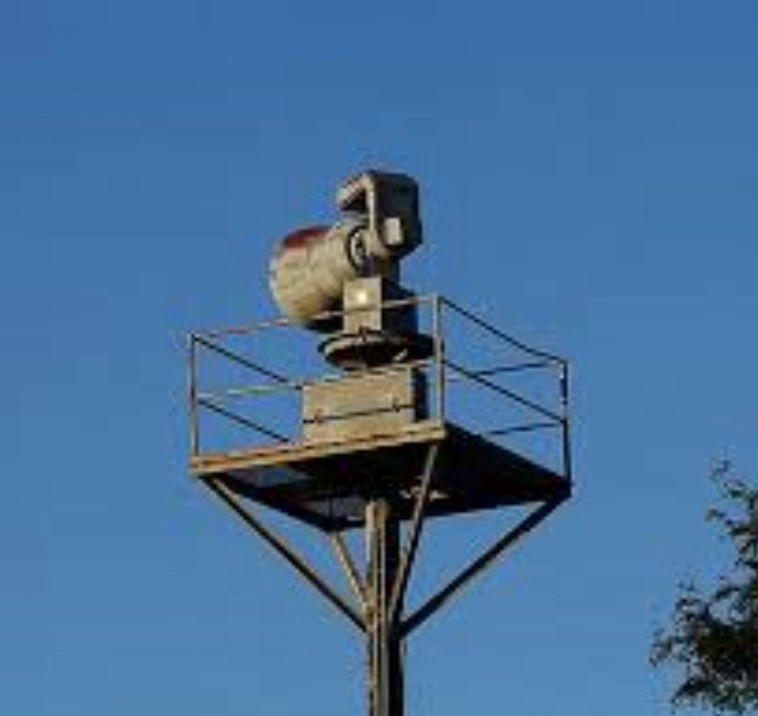
2. The network of attack warning sirens had been installed in the early ‘60s in response to a Privy Council Order (PCO 1959-656) that a national attack warning system be implemented in order to warn citizens of a nuclear attack on the continent and to alert them to the presence of radioactive fallout. The sirens were intended to produce aural signals for this purpose as well as to sound the all-clear signal. The sirens were to have been activated by Provincial Warning Officers in the various emergency government headquarters on the authority of the Prime Minister or through the CFWC. The original project called for the Department of National Defence (DND) to oversee the installation of some 2500 sirens across the nation. The ultimate aim was to provide warning to 95% of the population with 90% reliability. Appropriate equipment was to be installed in all urban centres having populations of over 5,000 people.
Operation Readiness History
3. Installation and testing of sirens proceeded until the mid’60s by which time approximately 1700 sirens were in place. At its peak the distribution of sirens was as shown in the table on the following page.
Table 1 – National Distribution of the Attack Warning Sirens
| Province | Number of sirens | Province | Number of sirens |
| British Columbia | 336 | Quebec | 282 |
| Alberta | 122 | New Brunswick | 78 |
| Saskatchewan | 32 | Nova Scotia | 92 |
| Manitoba | 75 | Prince Edward Is. | 7 |
| Ontario | 552 | Newfoundland | 67 |
| Nat’l Capital Reg | 61 | National Total | 1704 |
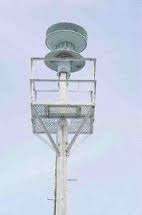
4. In 1968 a Cabinet decision directed a deferment of expenditures of capital funds for Civil Defence, but also directed that “… the reduction of emphasis to be placed on these measures… should not result in the dismantling of the Armed Forces Siren System and the necessary associated communications… beyond a point which would permit their rapid restoration to full operational readiness in a matter of hours or a few days.” This, in effect, halted completion of the DND siren installation program. Except for the replacement of malfunctioning sirens, no new installations took place (nor were audible test made) from that time on.
5. The problems resulting from having an AWSS based on 1950’s electro- mechanical technology, together with the inability of maintaining adequate coverage in the rapidly expanding urban areas, was recognized by the Interdepartmental Committee on Emergency Preparedness in the late ‘70s. As a result, under the Emergency Planning Order PCO 1981-1305 of May 1981, the responsibility for the development and operation of a National Warning System was transferred from DND to the Department of Communications (DOC). DND was instructed to maintain the existing AWSS until such time as DOC had a new system in place.
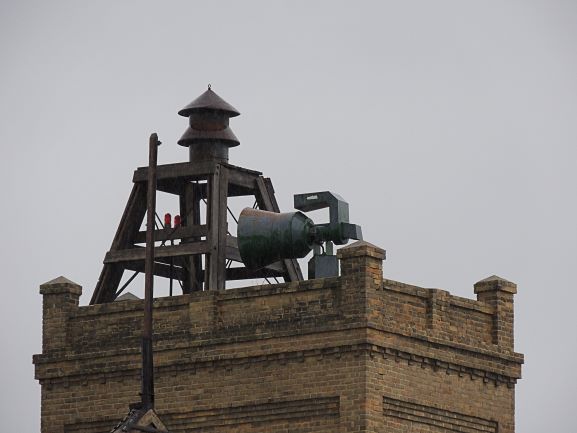
6. In response to the 1981 order, studies were carried out by DOC which in resulted in the examination of a number proposals, including the possible location of electronic devices in each home and place of work. While workable the idea was expensive and impracticable. In 1986, hoping to expedite the transfer of the system to DOC, DND funded a re-opening of the National Warning System studies. A proposal to develop an integrated Warning and Emergency Broadcasting System was developed and submitted to Treasury Board for approval (and funding) in 1990. The project was not approved.
7. As of 1992 DND continued to be responsible for the maintenance of the original AWSS. By this time the installed sirens were reaching the end of their useful life. Many had been installed for almost 30 years, and were becoming unreliable and difficult to maintain. Only 1300 sirens were considered to be in an operational condition. Exposure to harsh climatic conditions had taken their toll especially on the Atlantic coast and in the northerly sites. It was doubtful that more than 30% of them would have been able to be activated and perform the required 3 to 5 minute alerting signal without failure. Even assuming that all sirens functioned properly, increased standards of home and vehicle insulation and the growth of urban areas made it unlikely that more than about 20% of the population could have been reached by their signals.
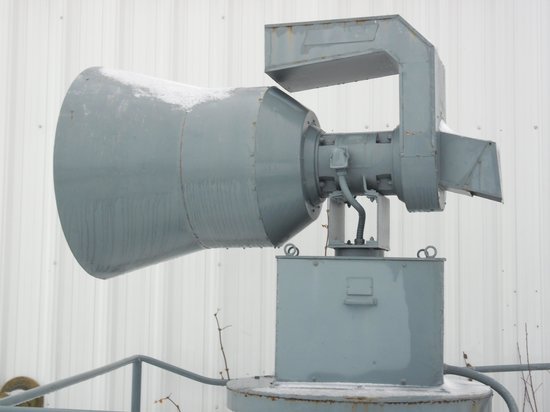
8. There were also some serious concerns about the supportability of the electronic infrastructure necessary to operate the AWSS. It became apparent that the telecommunication carriers’ increasing use of modern meant that key types of bridging equipment used in the system were no longer being manufactured, that many previously manned switching centres were being operated remotely, and that virtually all new equipment being introduced was not compatible with the AWSS’s sixties technology. In the late ‘80s this incompatibility was having a serious impact on the ability to activate the sirens remotely. For example, Newfoundland effectively had no operational siren system since each siren had to be activated manually in the event of an attack! Furthermore, while Quebec’s sirens could have been activated from a single location in the REGHQ in Valcartier, Ontario’s 560 sirens required activation through a number of separate telephone centres. All of the Ottawa area sirens were to have been activated from the National Defence Operations Centre.
9. Activation procedures (less the actual sounding of the sirens that had ceased in 1967 due to public sensitivities) were tested by DND at infrequent intervals. In 1990 it was estimated that it would have taken up to 35 minutes to activate all sirens that were factional and connected. Each siren was inspected by DND twice a year. They estimated the cost of maintaining the system at more than $1.7 million per year plus the use of significant amount of military and civilian maintenance staff, too much they considered for a system that was technically at the end of its life cycle and was difficult to support.
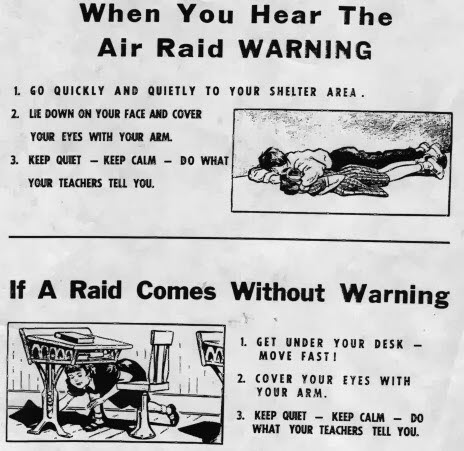
10. Some municipalities were becoming quite critical of the presence of sirens in their communities. They were felt to be “eyesores”, too warlike, and caused irritation during their occasional false soundings. (Most of the sirens were triggered using the telephone system, although-unbelievably- some had to be activated by an on-site switch!). Since most sirens were located on leased sites some property owners refused to extend leasing agreements. In 1994 to 96 DND removed and destroyed most of the sirens. The Diefenbunker, Canada’s Cold War Museum has three of them on display.
Webmaster’s Note: The link below is an excellent article by Dr. Andrew Burch.
https://journals.lib.unb.ca/index.php/mcr/article/view/20452/23613
The piece goes way beyond the sirens topic and illustrates and summarizes many of the CD issues at the time. Having been involved in CD / Emergency Preparedness for 15 years after I retired from the Army in the early 80s (and having done a lot of reading about the subject since) I can agree with most of what he says. However I don’t fully agree with the use (in the Abstract) of the term ‘absurdity’ regarding the CD effort. In my opinion the systems for warning (including sirens), ‘Duck and Cover’, shelters, etc., were not paneceas but they could /would have saved many lives, especially if they had of been properly supported by our political class. In my view they would have at least provided some possibility for eventual recovery.
